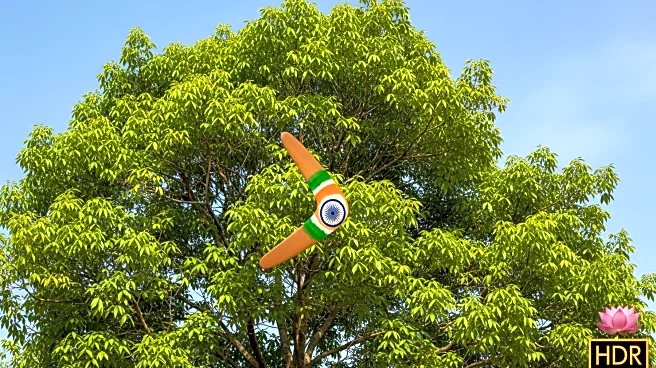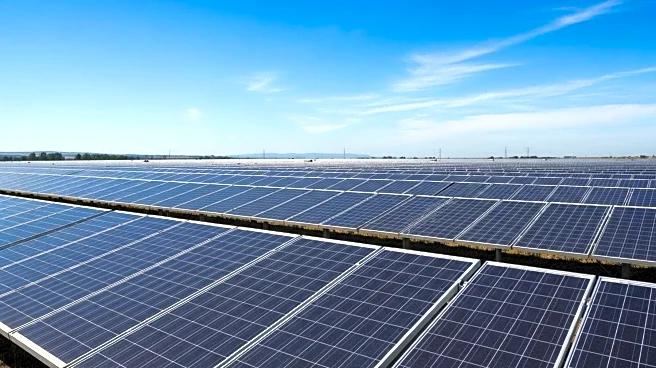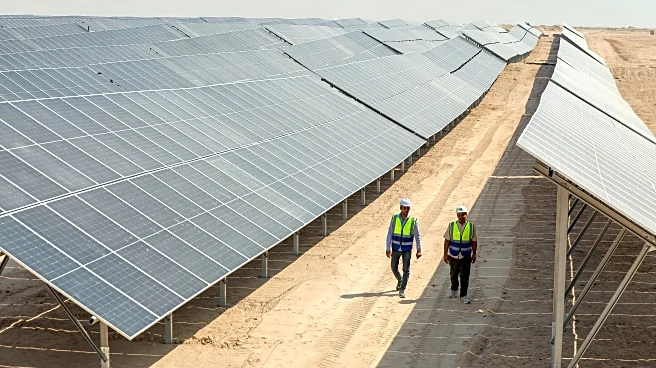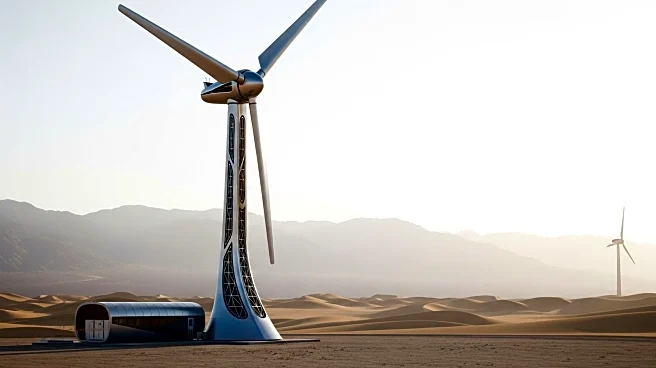What's Happening?
A new pilot project in Denmark has successfully integrated solar energy production with agricultural activities, demonstrating the potential for agrivoltaics to optimize land use. Researchers from Aarhus University have developed a solar plant with vertically mounted panels that allow for both energy generation and crop cultivation. The project showed that wheat and grass-clover mixtures grew effectively between the panels, while the solar setup produced electricity efficiently. This approach addresses the challenge of balancing renewable energy expansion with agricultural needs, offering a sustainable solution for land use.
Why It's Important?
The successful implementation of agrivoltaics in Denmark highlights a promising strategy for meeting renewable energy goals without compromising agricultural productivity. As the demand for renewable energy grows, finding ways to integrate solar farms with existing land uses is crucial to avoid conflicts over land resources. This project demonstrates that it is possible to achieve a win-win scenario for both energy and agriculture, potentially influencing future land use policies and renewable energy projects. The approach could be particularly beneficial in regions where land availability is limited.
What's Next?
The positive results from the Danish pilot project may encourage further research and development of agrivoltaic systems worldwide. Policymakers and energy companies might explore similar projects to enhance renewable energy capacity while supporting agricultural communities. The scalability and adaptability of this model will be key factors in its broader adoption, potentially leading to new standards for sustainable land use in the energy sector.












